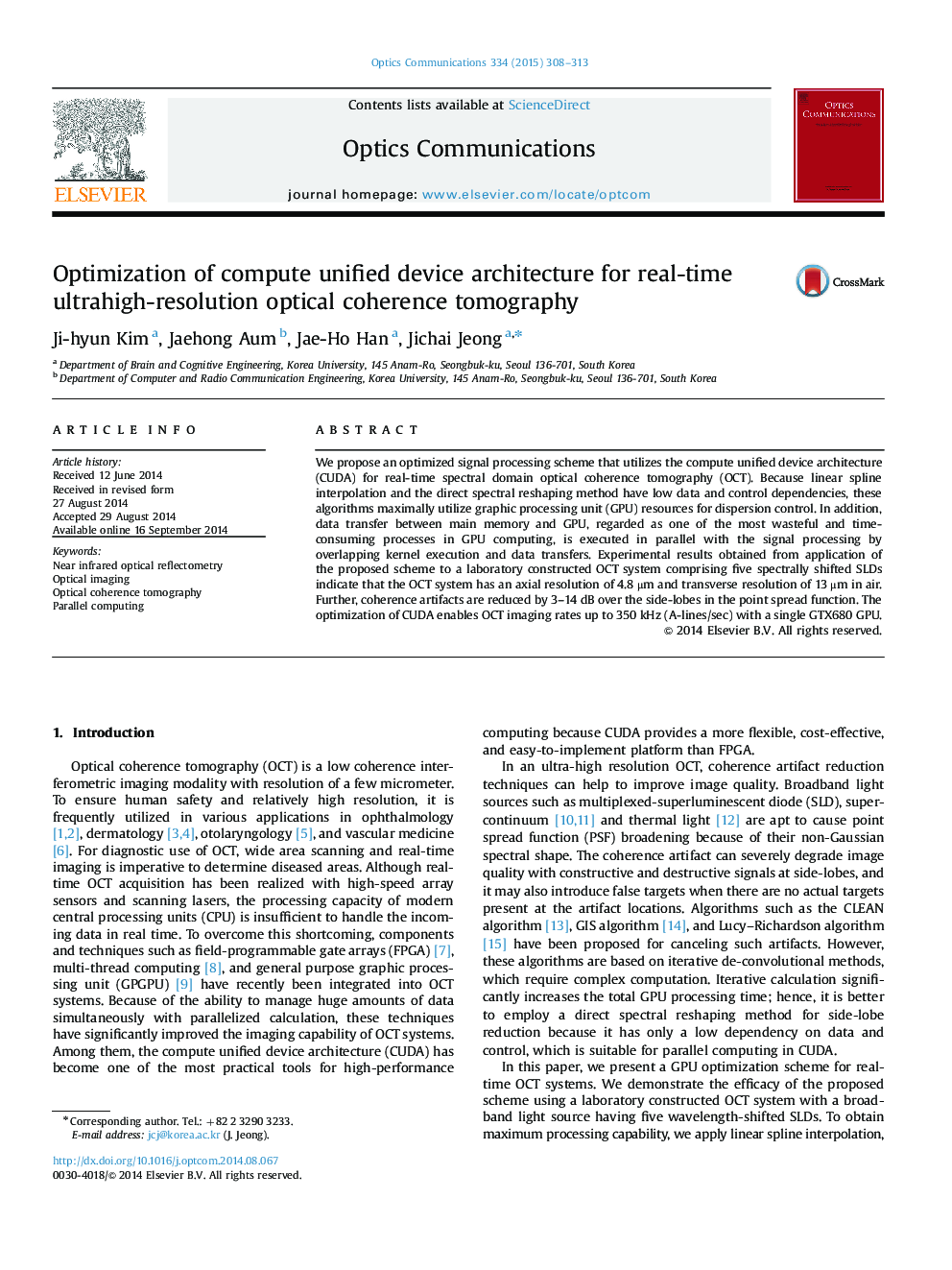| Article ID | Journal | Published Year | Pages | File Type |
|---|---|---|---|---|
| 7930934 | Optics Communications | 2015 | 6 Pages |
Abstract
We propose an optimized signal processing scheme that utilizes the compute unified device architecture (CUDA) for real-time spectral domain optical coherence tomography (OCT). Because linear spline interpolation and the direct spectral reshaping method have low data and control dependencies, these algorithms maximally utilize graphic processing unit (GPU) resources for dispersion control. In addition, data transfer between main memory and GPU, regarded as one of the most wasteful and time-consuming processes in GPU computing, is executed in parallel with the signal processing by overlapping kernel execution and data transfers. Experimental results obtained from application of the proposed scheme to a laboratory constructed OCT system comprising five spectrally shifted SLDs indicate that the OCT system has an axial resolution of 4.8 μm and transverse resolution of 13 μm in air. Further, coherence artifacts are reduced by 3-14 dB over the side-lobes in the point spread function. The optimization of CUDA enables OCT imaging rates up to 350 kHz (A-lines/sec) with a single GTX680 GPU.
Related Topics
Physical Sciences and Engineering
Materials Science
Electronic, Optical and Magnetic Materials
Authors
Ji-hyun Kim, Jaehong Aum, Jae-Ho Han, Jichai Jeong,
